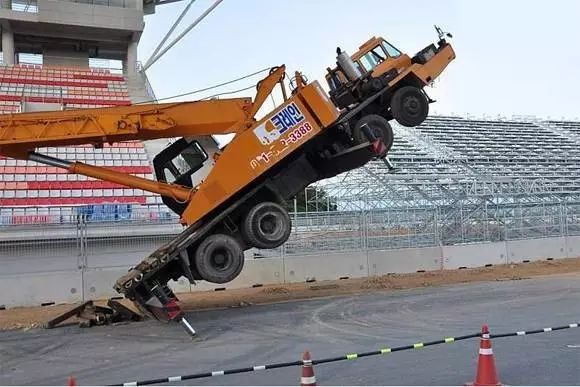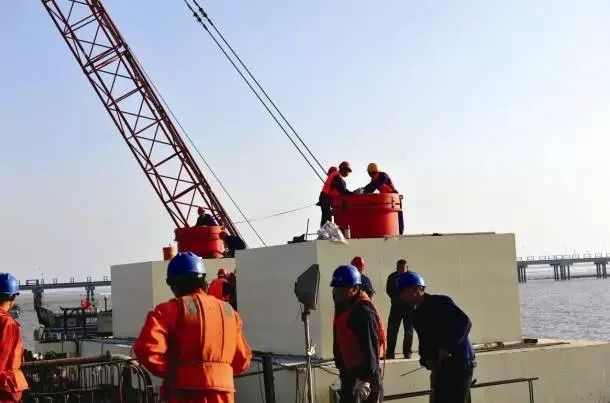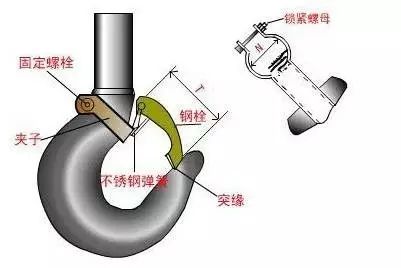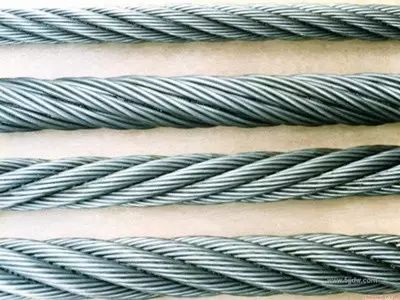Common accidents of crane machinery include: squeezing, collision, hooking, falling, derailment, collapse, tipping, breaking, electric shock, etc.

The main causes of these accidents are operation factors, equipment factors and environmental factors.
1. Operational factors mainly include:
(1) Unhooking caused by improper lifting method and loose binding, and injuries caused by the lifting object scattering or swinging;
(2) Violation of operating procedures, such as overloading, people working in dangerous areas, etc., causing casualties and equipment damage, as well as overloading, over-winching, derailment, overturning and other accidents caused by the driver's failure to use the weight limiter, limiter, brake or return to position or anchor according to regulations;
(3) Collisions caused by improper command and uncoordinated actions, etc.
2. Equipment factors mainly include:
(1) Failure of lifting equipment, such as the fall of heavy objects caused by damage to hooks, grabs, wire ropes, nets, etc.;
(2) Accidents caused by failure of the control system of the lifting equipment or failure of the safety device, such as failure of the brake device causing impact and crushing of heavy objects;
(3) Accidents caused by insufficient strength of components, such as the tipping of tower cranes, the reason is that the tilting moment of the tower exceeds its stability moment;
(4) Electric shock accidents caused by damage to electrical appliances;
(5) Derailment accidents of bridge cranes caused by gnawing, excessive wear, or bending.
3. Environmental factors mainly include:
(1) Equipment accidents such as derailment, collapse, and tipping caused by strong natural disasters such as lightning, gusts, tornadoes, typhoons, and earthquakes;
(2) Collision and squeezing accidents caused by crowded and messy sites;
(3) Collision accidents caused by insufficient brightness and obstruction of vision.
What are the general safety requirements for crane operators?

(2) When hanging, the angle between the hanging ropes should be less than 120° to avoid excessive force on the hanging ropes.
(3) Pads should be added to the corners where the ropes and chains pass.
(4) When commanding an object to flip, its center of gravity should change smoothly, and no movements beyond the command intention should occur.
(5) When entering under a suspended heavy object, you should first contact the driver and set up a support device.
(6) When multiple people are tied, one person should be responsible for command.
What should be paid attention to when using the hook?

2. Cast hooks shall not be used for lifting machinery; hooks should be equipped with safety devices to prevent accidental unhooking of the objects; the surface of the hook should be smooth and free of peeling, sharp angles, burrs, cracks, etc.; the hook material should be high-quality low-carbon killed steel or low-carbon gold-containing steel;
3. Forged hooks generally use 20 steel specified in GB699-88 "Technical Conditions for High-quality Carbon Structural Steel";
4. Plate hooks generally use Q235 specified in GB700-88 "Technical Conditions for Ordinary Carbon Structural Steel" or 16Mn steel specified in GB/T1591-94 "Low-alloy High-strength Structural Steel".
5. Defects on the lifting structure shall not be repaired by welding.
What are the specific regulations for safe operation of cranes?
(1) When the driver takes over, he should check the brakes, hooks, wire ropes and safety devices. If abnormal performance is found, it should be eliminated before operation.
(2) Before driving, a bell or alarm must be sounded. When approaching people during operation, an intermittent bell or alarm should also be given.
(3) Operations should be carried out according to command signals. Emergency stop signals should be executed immediately regardless of who issues them.
(4) The main power supply can be closed only when it is confirmed that there is no one on or around the crane. When the power circuit device is locked or has a sign, the main power supply should be closed only after the relevant personnel remove it.
(5) Before closing the main power supply, all controller handles should be placed at zero position.
(6) When there is a sudden power outage during work, all controller handles should be returned to zero position. Before resuming work, check whether the crane is working normally.
(7) For cranes operating in the open air on the track, the crane should be anchored when the work is completed. When the wind force is greater than level 6, the crane should generally stop working and anchor it. For cranes working on the coast, when the wind force is greater than level 7, the crane should stop working and anchor it.
(8) When the driver performs maintenance, the main power supply should be cut off and a signboard or locked. If there is an unresolved fault, the driver who takes over should be notified.
Ten things that crane drivers should not do during work
(1) Do not lift objects with people standing on them or floating objects.(2) Do not lift objects that are overloaded.
(3) Do not lift objects with unclear signals or dim light.
(4) Do not lift objects that are flammable, explosive or acidic.
(5) Do not lift objects with defects or when the objects are being processed directly.
(6) Do not lift objects with unqualified wire ropes or loose binding.
(7) Do not lift objects buried underground or solidified on the ground if their weight is unknown.
(8) Do not lift objects that are too full of steel or iron ladles.
(9) Do not lift objects that are crooked, slanted, or have sharp or bladed corners that are not properly padded.
(10) Do not lift objects that are under illegal instructions.
The main prohibited items for cranes are as follows
(1) Lift or move people using the lifting mechanism.
(2) Lift flammable, explosive or acidic objects.
(3) Lift objects that are overloaded.
(4) Use one vehicle to hit another vehicle.
(5) Throwing heavy objects from the crane.
(6) Non-drivers (personnel without operating licenses) operate the crane.
How to judge whether the wire rope should be scrapped?

The scrapping standards are as follows:
(1) The number of broken wires in a twist pitch of the wire rope reaches 10% of the total number of wires. For example, if the rope is 6×19=114 wires, it should be scrapped and replaced when the number of broken wires reaches 12 wires. For example, if the rope is 6×37=222 wires, it should be scrapped and replaced when the number of broken wires reaches 22 wires. For wire ropes composed of thick and thin wires, the number of broken wires is calculated as one thin wire and 1.7 thick wires.
(2) If the radial wear or corrosion of the wire exceeds 40% of the original diameter, it should be scrapped. If it is less than 40%, it can be scrapped according to the regulations by reducing the number of broken wires.
(3) The number of scrapped wires of wire ropes used to lift hot metals or dangerous goods shall be half of the scrapping standard for wire ropes used in general cranes.
(4) For structural wire ropes that meet the requirements of ISO2408 (General Purpose Wire Rope Characteristics), the number of scrapped broken wires shall be in accordance with the number specified in GB5972-86.
(5) Wire ropes that are broken in the entire strand shall be scrapped.
(6) When the diameter of the wire rope is reduced by 7% or more relative to the nominal diameter, even if no broken wires are found, the wire rope shall be scrapped.
(7) Wire ropes with exposed hemp core shall be scrapped.
(8) Wire ropes with obvious corrosion shall be scrapped.
(9) Wire ropes with partial outer layer wires stretched to form a cage-like state shall be scrapped.
(10) Wire ropes that are similar to the typical examples of wire ropes in GB5972-86 shall be scrapped.












